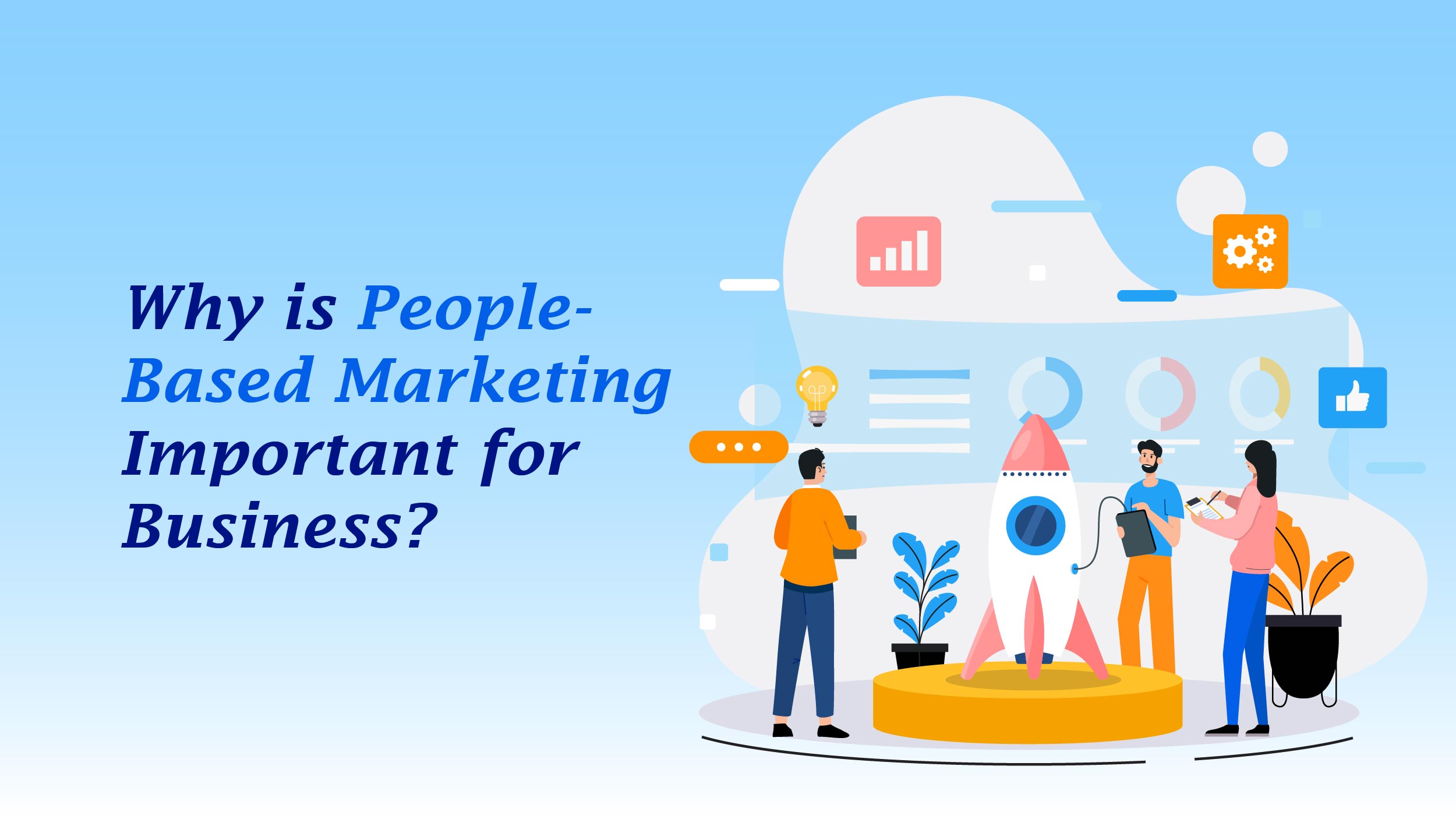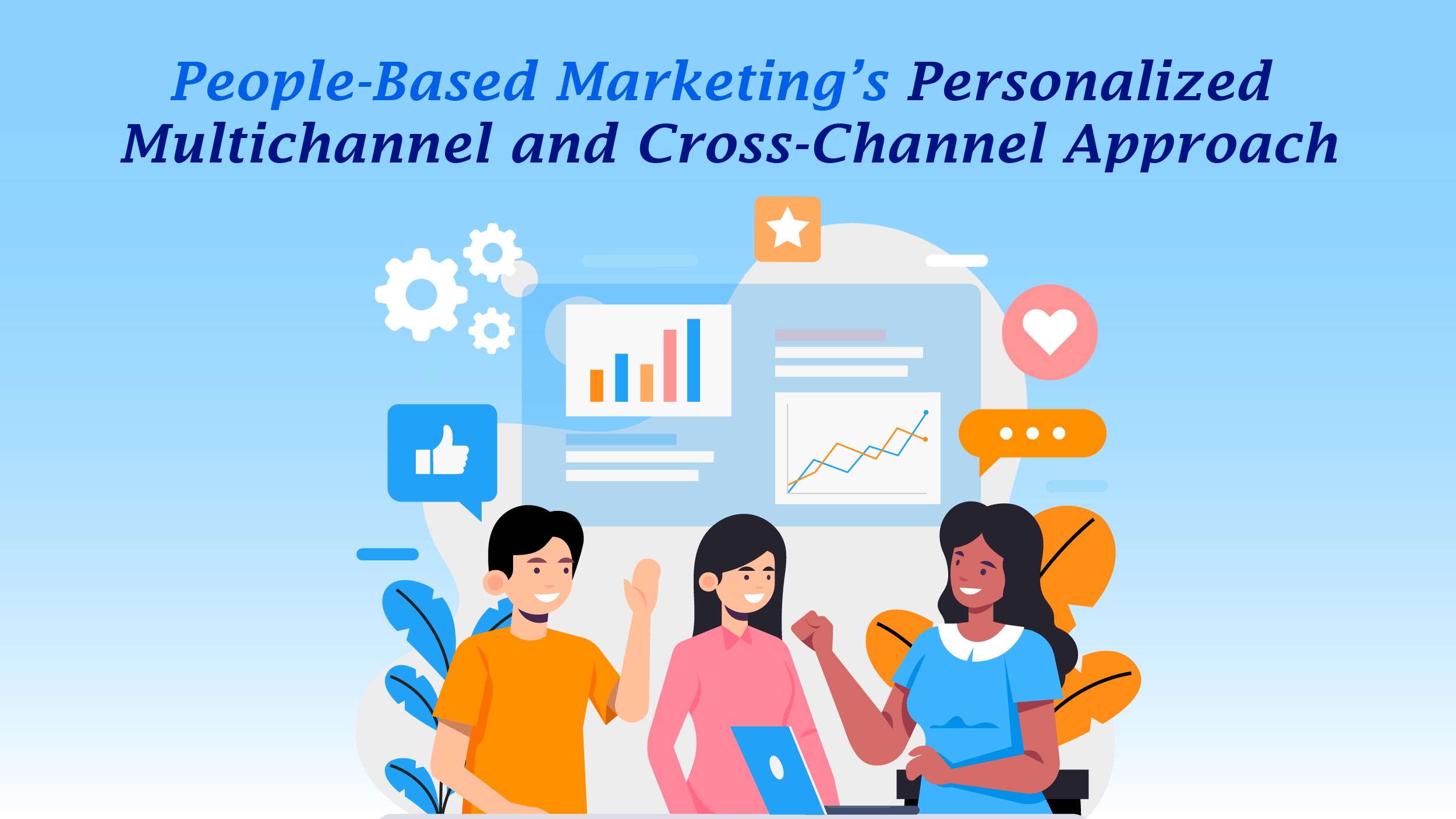The main goal of marketing campaigns is to connect with the target audience. When you get too focused on the small details of a campaign, you may forget this key point. We are not reaching out to just an audience. We are reaching out to real people.
With people-based marketing, this concept is a priority. It guides marketing tactics, enabling personalized advertising campaigns. These campaigns attract quality leads and produce a solid return on investment (ROI). This article discusses exactly how you can leverage this marketing tactic.
What is People-Based Marketing?
People-based marketing is based on a personalized marketing approach, enabling brands to send customized messages and campaigns to the ideal audience at optimal times. Instead of dividing customers into large audience segments, people-based marketing focuses on each customer as a distinct target.
It further builds comprehensive, rich consumer profiles using customer data from both online and offline sources. Brands utilize this information to forecast key events, such as sales by specific customers over time, media exposure trends, and the full consumer route to purchase. This aids them in learning more about the factors that influence advocacy, sales, favorable brand equity, and awareness.
Why is People-Based Marketing Important for Business?
 Unlike traditional media platforms, marketers can escape the rat race of segmenting their ideal audiences in terms of various attributes such as demographics, age, region, and much more. The primary objective was to find the precise place to advertise to attract the right customers.
Unlike traditional media platforms, marketers can escape the rat race of segmenting their ideal audiences in terms of various attributes such as demographics, age, region, and much more. The primary objective was to find the precise place to advertise to attract the right customers.
Similarly to this, marketers first identify their target demographic for digital planning, but they can now be more specific. For instance, we may search for adults in Ohio who are interested in coffee and are 18 to 34 years old. After that, we can display advertisements for this group wherever they are online. In this situation, the objective is to find the ideal group of individuals while maintaining the status quo.
Marketers don’t maintain any fixed principles when using this tactic. Instead of broad categories like “adults 18–34” or “people who like coffee,” we can now discover an individual and connect with them on any device or platform. This is because reach and attention are dispersed across platforms and devices nowadays, Every one of these factors will shift with each exposure; therefore, marketers must plan for people’s locations to effectively scale the aim of showing the appropriate advertisement to the right person at the right moment.
How is People-Based Marketing Different From Traditional Marketing?
People-based marketing differs greatly from conventional marketing. The key contrasts are:
- Individualized Approach: While broad segments are targeted in conventional marketing, people-based methods center on tailoring messaging to each unique consumer. Rather than lumping people into groups, each individual is treated distinctly, allowing personalized campaigns.
- Data Collection Methodology: Demographic data fuels conventional marketing, but people-based marketing utilizes real-time behavioral insights and first-party brand data. This provides a unified system revolving around the individual consumer, yielding a deeper understanding of preferences and behaviors for more relevant strategies.
- Cross-Channel Cohesion: Consistent messaging and campaigns across various channels and touchpoints are prioritized. By tracking consumer identities across platforms and devices, a seamless, individualized experience is fostered.
- Precision Targeting: People-based marketing accurately identifies the same consumer across devices, enabling effective audience engagement and a unified customer journey, regardless of screen use.
- Going cookieless: Typical advertising commonly utilizes cookies for monitoring and targeting customers. However, people-based marking approaches are transitioning towards cookie-leaf techniques. With growing privacy concerns and stricter regulations, people-based marketing explores alternative solutions to identify customers and deliver tailored experiences.
People-Based Marketing’s Personalized Multichannel and Cross-Channel Approach
 People-based marketing centers on personalization across channels, crafting tailored messages for customers and prospects. Marketers strive to resonate with individuals through customized content and experiences.
People-based marketing centers on personalization across channels, crafting tailored messages for customers and prospects. Marketers strive to resonate with individuals through customized content and experiences.
In multichannel marketing, where users engage independently via online, in-person, call centers, etc., each channel stands alone. Since channels don’t communicate during the customer journey, personalization ensures excellent, well-tasted experiences on every platform to drive conversions.
Cross-channel marketing links customer activities throughout their buying journey. Online, in-store, and phone interactions connect, building on previous touchpoints to guide purchases. Here too, personalization is vital, with each interaction incorporating specific data from prior engagements.
Marketing focused on individuals allows effective communication across various channels. It provides companies with an in-depth comprehension of customer preferences regarding media consumption. With this knowledge, brands can craft highly personalized campaigns aligned with audience habits and tendencies. They structure future initiatives utilizing these invaluable insights, catering to specific needs and inclinations.
Why Does People-Based Marketing Work?
People-based marketing is effective because it focuses on particular customers or individuals rather than general demographics or audience categories. Marketers may develop personalized messages that resonate with each consumer by leveraging data to identify them and their behavior, which will enhance customer engagement, conversion rates, and eventually income. Additionally, it enables more precise and effective targeting, minimizing the waste of ad spend and maximizing the efficacy of marketing efforts.
Also Read: Demand Side Platform for Programmatic Advertising: A Beginner’s Guide
Benefits of Personalized People-Based Marketing
The following are just a few advantages that can help you ace the marketing game:
- Improved Message Tailoring: Since this type of marketing centers on the person, not just cookies in a browser, in the center, it gives you the chance to craft original messages that connect with your target consumers. A more all-encompassing strategy You may more successfully reach your target demographic both online and offline as you are basing your ads on people rather than cookies.
- Appropriate Timing and Media: Learn more about the media that converts and the times that your target audiences are more responsive to your commercials.
- Less Unproductive Media Spend: By concentrating on the appropriate target demographic with the appropriate message on the appropriate platform, you will waste less money on media that isn’t generating marketing ROI.
- Extend Your Horizons: By focusing on prospects who are comparable to your current clientele, you can increase your sales. You can more effectively target audiences who could be more responsive to your product offerings by creating look-alike audiences.
How are Companies Implementing People-Based Marketing?
People-based marketing is a data-driven marketing tactic that has gained popularity recently as a means for businesses to better comprehend and target their target audiences. This strategy focuses on creating a comprehensive picture of each client and using that knowledge to tailor marketing initiatives across channels and touchpoints. By doing this, businesses may engage customers more deeply, foster loyalty, and eventually boost sales. On LinkedIn, members can target based on job title, company, industry, and seniority, which can be very effective.
The usage of customer data platforms (CDPs) is one of the primary ways that large organizations are incorporating people-based techniques into their strategy. Through CDPs, brands can gather and combine customer data from a variety of sources, including email, social media, site analytics, and CRM systems. A single, comprehensive perspective of every client, including their preferences, activities, and purchase history, may then be created using the analysis of this data. Each connection with the consumer will be pertinent and interesting, thanks to the personalization of marketing messages and offers made possible by this data across channels.
How to Craft a Data-Driven Approach for Customer Engagement?
Leveraging first-party data is pivotal, but the question arises: how can it be obtained? Several strategies can be employed.
Implement Lead Capture Forms
A straightforward technique involves utilizing lead generation forms like contact or quote request submissions. These forms gather essential customer information such as names, emails, and visit purposes. This data empowers targeted advertising to potential customers, enhancing communication chances. Furthermore, it facilitates nurturing leads through personalized e-mail campaigns.Collecting first-party data from lead capture forms is an individualized marketing strategy that enables you to launch more strategies that reach people who are more likely to become leads and customers.
Integrate Data-Tracking Tools
Web analytics platforms like Google Analytics offer invaluable real-time insights into website activities. Marketers gain visibility into customer content interactions, audience demographics, device usage, and more. This wealth of data enriches our understanding of customary behavior and preferences.
Google Analytics provides data-gathering abilities. Plus, it has tools for overseeing your Google Ads account. This makes handling ads easier and more streamlined.
Final Takeaway
People-based marketing represents a significant shift from traditional marketing approaches by focusing on individuals rather than broad audience segments. By leveraging real-time data and personalization, it enables marketers to deliver more relevant and engaging campaigns across multiple channels and devices.


Comments are closed.